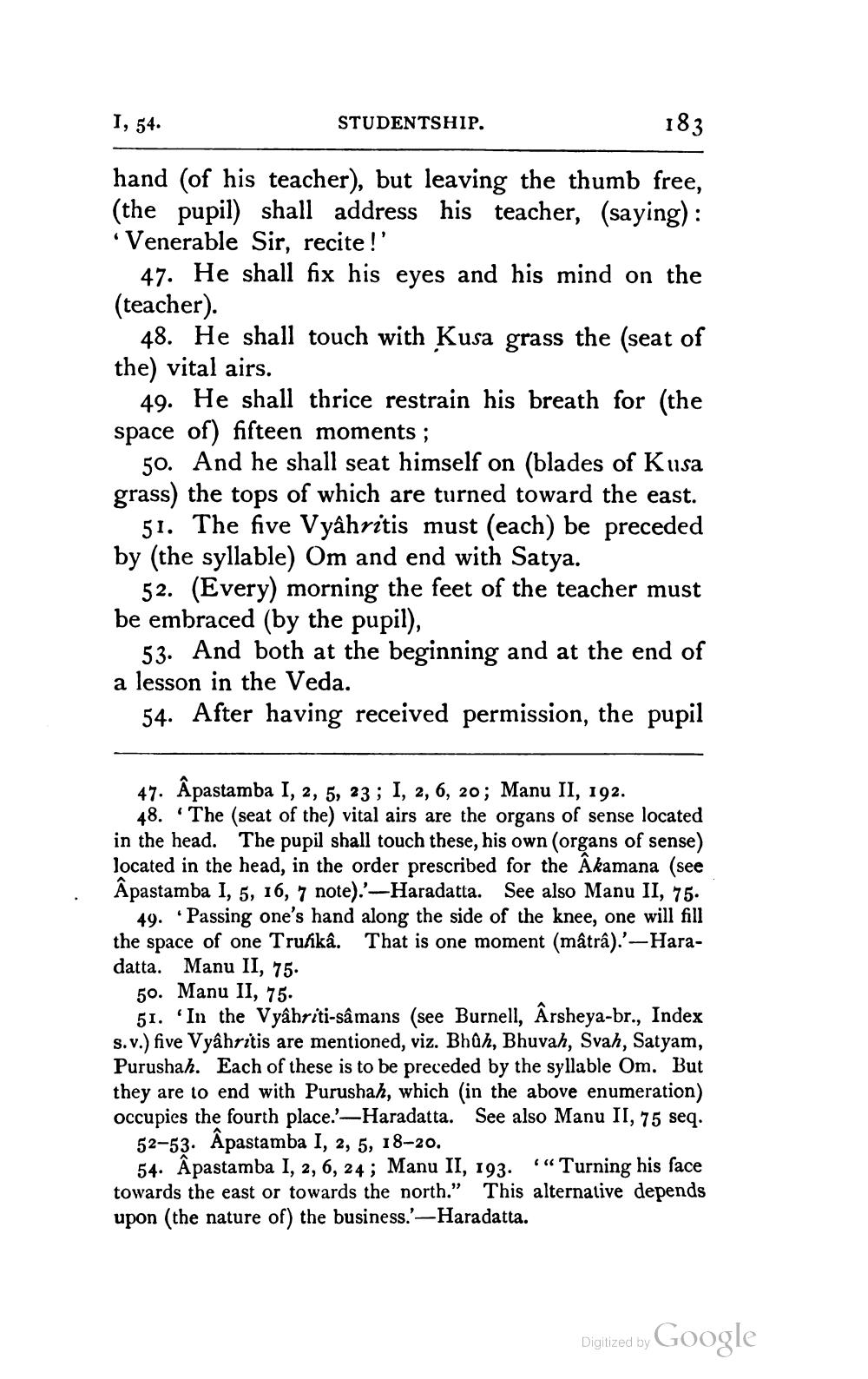________________
183
hand (of his teacher), but leaving the thumb free, (the pupil) shall address his teacher, (saying): 'Venerable Sir, recite!'
I, 54.
STUDENTSHIP.
47. He shall fix his eyes and his mind on the (teacher).
48. He shall touch with Kusa grass the (seat of the) vital airs.
49. He shall thrice restrain his breath for (the space of) fifteen moments;
50. And he shall seat himself on (blades of Kusa grass) the tops of which are turned toward the east.
51. The five Vyâhritis must (each) be preceded by (the syllable) Om and end with Satya.
52. (Every) morning the feet of the teacher must be embraced (by the pupil),
53. And both at the beginning and at the end of a lesson in the Veda.
54. After having received permission, the pupil
47. Âpastamba I, 2, 5, 23; I, 2, 6, 20; Manu II, 192.
48. The (seat of the) vital airs are the organs of sense located in the head. The pupil shall touch these, his own (organs of sense) located in the head, in the order prescribed for the Âkamana (see Âpastamba I, 5, 16, 7 note).'-Haradatta. See also Manu II, 75.
49. Passing one's hand along the side of the knee, one will fill the space of one Trufikâ. That is one moment (mâtrâ).'-Haradatta. Manu II, 75.
50. Manu II, 75
51. In the Vyâhriti-sâmans (see Burnell, Ârsheya-br., Index s.v.) five Vyâhritis are mentioned, viz. Bhûh, Bhuvah, Svah, Satyam, Purushah. Each of these is to be preceded by the syllable Om. But they are to end with Purushah, which (in the above enumeration) occupies the fourth place.'-Haradatta. See also Manu II, 75 seq. 52-53. Apastamba I, 2, 5, 18-20.
""Turning his face
54. Âpastamba I, 2, 6, 24; Manu II, 193. towards the east or towards the north." This alternative depends upon (the nature of) the business.'-Haradatta.
Google
Digitized by




